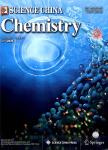A capacitive sensor based on molecularly imprinted polymers and poly(p-aminobenzene sulfonic acid) film for detection of pazufloxacin mesilate
A capacitive sensor based on molecularly imprinted polymers and poly(p-aminobenzene sulfonic acid) film for detection of pazufloxacin mesilate作者机构:College of Chemistry and Chemical EngineeringSouthwest UniversityChongqing 400715China
出 版 物:《Science China Chemistry》 (中国科学(化学英文版))
年 卷 期:2007年第50卷第4期
页 面:547-553页
核心收录:
学科分类:081704[工学-应用化学] 07[理学] 08[工学] 0817[工学-化学工程与技术] 070305[理学-高分子化学与物理] 080501[工学-材料物理与化学] 0805[工学-材料科学与工程(可授工学、理学学位)] 0703[理学-化学]
基 金:Supported by the National Natural Science Foundation of China (Grant No. 20675064) the Natural Science Foundation of Chongqing City (Grant No. CSTC-2004BB4149 and 2005BB4100) High Technology Project Foundation of Southwest University (Grant No. XSGX02)
主 题:capacitive sensor molecularly imprinted polymers p-aminobenzene sulfonic acid pazufloxacin mesilate
摘 要:A novel capacitive sensor for pazufloxacin mesilate (pazufloxacin) determination was developed by electropolymerizing p-aminobenzene sulfonic (p-ABSA) and molecularly imprinted polymers (MPs), which was synthesized through thermal radical copolymerization of metharylic acid (MAA) and ethylene glycol dimethacrylate (EGDMA) in the presence of pazufloxacin template molecules, on the gold electrode surface. Furthermore, 1-dedecanethiol was used to insulate the modified electrode. Alternating current (ac) impedance experiments were carried out with a Model IM6e to obtain the capacitance responses. Under the optimum conditions, the sensor showed linear capacitance response to pazufloxacin in the range of 5 ng·mL?1 to 5 μg·mL?1 with a relative standard deviation (RSD) 5.3% (n=7) and a detection limit of 1.8 ng·mL?1. The recoveries for different concentration levels of pazufloxacin samples varied from 94.0% to 102.0%. Electrochemical experiments indicated the capacitive sensor exhibited good sensitivity and selectivity and showed excellent parameters of regeneration and stability.



